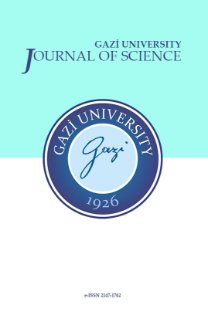Wind Speed Clustering Using Linkage-Ward Method: A Case Study of Khaaf, Iran
Renewable energy, wind power, probabilistic model, clustering,
___
- D. B. Richardson, "Electric vehicles and the electric grid: A review of modeling approaches, Impacts, and renewable energy integration," Renewable and Sustainable Energy Reviews, vol. 19, pp. 247-254, 2013.
- J. Twidell and T. Weir, Renewable energy resources: Routledge, 2015.
- P. Meibom, K. B. Hilger, H. Madsen, and D. Vinther, "Energy comes together in Denmark: The key to a future fossil-free Danish power system," Power and Energy Magazine, IEEE, vol. 11, pp. 46-55, 2013.
- M. Marinelli, F. Sossan, G. T. Costanzo, and H. W. Bindner, "Testing of a predictive control strategy for balancing renewable sources in a microgrid," Sustainable Energy, IEEE Transactions on, vol. 5, pp. 1426-1433, 2014.
- D. Fadare, "The application of artificial neural networks to mapping of wind speed profile for energy application in Nigeria," Applied Energy, vol. 87, pp. 934-942, 2010.
- A. Mellit and S. A. Kalogirou, "Artificial intelligence techniques for photovoltaic applications: A review," Progress in energy and combustion science, vol. 34, pp. 574-632, 2008.
- E. Erdem and J. Shi, "ARMA based approaches for forecasting the tuple of wind speed and direction," Applied Energy, vol. 88, pp. 1405-1414, 2011.
- J. M. Morales, R. Minguez, and A. J. Conejo, "A methodology to generate statistically dependent wind speed scenarios," Applied Energy, vol. 87, pp. 843-855, 2010.
- G. Chicco, "Overview and performance assessment of the clustering methods for electrical load pattern grouping," Energy, vol. 42, pp. 68-80, 2012.
- G. Gómez, W. D. Cabos, G. Liguori, D. Sein, S. Lozano‐Galeana, L. Fita, et al., "Characterization of the wind speed variability and future change in the Iberian Peninsula and the Balearic Islands," Wind Energy, 2015.
- L. Carro-Calvo, S. Salcedo-Sanz, L. Prieto, N. Kirchner-Bossi, A. Portilla-Figueras, and S. Jiménez-Fernández, "Wind speed reconstruction from synoptic pressure patterns using an evolutionary algorithm," Applied Energy, vol. 89, pp. 347-354, 2012.
- H. Goh, S. Lee, Q. Chua, K. Goh, and K. Teo, "Wind energy assessment considering wind speed correlation in Malaysia," Renewable and Sustainable Energy Reviews, vol. 54, pp. 1389-1400, 2016.
- A. Mostafaeipour, A. Sedaghat, M. Ghalishooyan, Y. Dinpashoh, M. Mirhosseini, M. Sefid, et al., "Evaluation of wind energy potential as a power generation source for electricity production in Binalood, Iran," Renewable energy, vol. 52, pp. 222-229, 2013.
- J. Han, J. Pei, and M. Kamber, Data mining: concepts and techniques: Elsevier, 2011.
- C. C. Aggarwal and C. K. Reddy, Data clustering: algorithms and applications: CRC Press, 2013.
- Khorasan.ir, Razavi Khorasan Province Portal, http://www.khorasan.ir.
- http://www.satba.gov.ir/fa/regions/windatlas.
- Yayın Aralığı: 4
- Başlangıç: 1988
- Yayıncı: Gazi Üniversitesi, Fen Bilimleri Enstitüsü
Burcu YILMAZ CITAK, Huseyin DURAL, Burcu GONEN
Majeed AL-JAWARY, Al-zahraa ABDUL NABI
Mary Mekala ANTONY DHAS, Srimathi CHANDRASEKARAN
Bromination of 1,2-Dimethylenecyclohexane: Temperature Effect on Product Distribution
Kevser Betül CEYLAN, Çiğdem TEKİN, Sevda KIRBAĞ, Yavuz ERDEN, Suat TEKİN
Biodegradation of Low Density Polyethylene by Selected Bacillus sp.
Kartikey KUMAR GUPTA, Deepa DEVI
Sedef DEMIRCI, Mehmet DEMIRCI, Seref SAGIROGLU
Mohammad DEHGHANI, Zeinab MONTAZERI, Om Parkash MALIK
